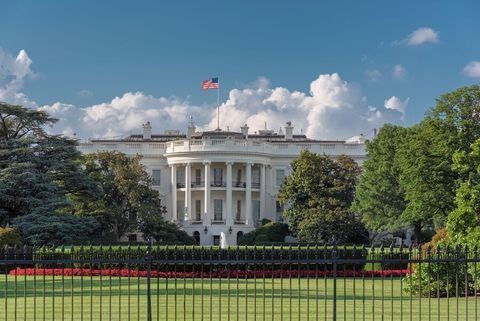DOJ/FTC Issue Final Revised Antitrust-Intellectual Property Licensing Guidelines
Client Alert | 4 min read | 01.17.17
On January 13, 2017, the Antitrust Division of the Department of Justice and the Federal Trade Commission released the final version of their revised Antitrust Guidelines for the Licensing of Intellectual Property. While the revised Guidelines update relevant authorities to reflect developments in federal statutory law, Supreme Court precedent, and other agency guidance that has been issued over the past 20 years—particularly the 2010 Horizontal Merger Guidelines—the 2017 Antitrust-IP Guidelines retain the core concepts and enforcement principles of the original version, first issued in 1995.
The 2017 Licensing Guidelines outline the agencies’ antitrust enforcement policy towards the licensing of intellectual property, covering the antitrust analysis of common licensing terms such as field-of-use and territorial restrictions, exclusivity provisions, grantbacks, and cross-licenses. The Guidelines also cover closely related issues such as patent pools and bundled or package licensing arrangements. Although the Guidelines expressly cover enforcement policy regarding licensing rights covered by patent, copyright, and trade secret law, the agencies also state that the same principles are relevant to analyzing trademark licenses.
The agencies continue to base the Guidelines on the premise that antitrust and IP are complementary areas of law that work together to promote innovation and consumer welfare. The Guidelines also hold firm to three fundamental principles:
- The agencies apply the same antitrust principles to IP as to other forms of property.
- The agencies do not presume that IP creates market power as that term is understood under the antitrust laws.
- The agencies recognize that IP licensing allows firms to combine complementary assets of production and is generally procompetitive.
Recognizing the strong procompetitive benefits associated with IP licensing, the agencies retain their long-standing enforcement posture towards such arrangements, stating that “in the vast majority of cases, restraints in licensing arrangements are evaluated under the rule of reason.” The rule of reason is a flexible, fact-based standard that requires the agencies to evaluate whether an arrangement will harm competition, taking into account any associated efficiencies.
While the 2017 Guidelines largely track the 1995 Guidelines, the revisions provide the agencies greater flexibility to pursue more novel enforcement theories, should they be inclined to do so. In particular:
- The agencies largely retain the controversial notion of an “innovation market,” changing the name to “research and development market.” And consistent with recent agency emphasis on innovation in the merger context, the agencies signal that they will consider competitive effects in R&D markets outside the pharmaceutical and medical device sectors where potential competition cases are relatively common in the merger context.
- The agencies also give themselves greater flexibility to shift the initial burden of proof to the defendant under the rule of reason standard. In particular, the agencies add language that provides them with broader discretion to rely on a truncated market analysis in challenging an IP licensing arrangement—an approach the Supreme Court rejected in FTC v. Actavis, 133 S. Ct. 2223 (2013).
- The agencies add language to signal that they retain discretion to pursue antitrust enforcement actions against IP owners for a unilateral refusal to share IP with competitors in rare circumstances, but do not define those circumstances.
The agencies first issued the proposed update on August 12, 2016, calling for comments. After reviewing comments filed by key industry stakeholders, bar associations, and academics, the agencies issued the proposed guidelines essentially unchanged. Notably, the agencies rejected calls to provide special guidance for patent assertion entities or conduct associated with standard-essential patents.
The Guidelines were issued on the same day that FTC Chairwoman Edith Ramirez announced her resignation from the agency after serving for more than six years as a Commissioner—with the last nearly four of those years as Chair. Both Chairwoman Ramirez and DOJ Antitrust Division Acting Assistant Attorney General Renata Hesse issued statements emphasizing an effects-based approach to the antitrust analysis of IP licensing arrangements. FTC Commissioner Maureen Ohlhausen, who has been critical of foreign—and sometimes domestic—antitrust enforcement policy towards the exercise of IP rights, issued a separate statement, describing the update as modest, and “embracing principles of commendable flexibility.” But she cautioned that the 2017 Guidelines must be read in conjunction with broader agency guidance on the intersection of antitrust and IP law, particularly the U.S. Department of Justice & Federal Trade Commission, Antitrust Enforcement and Intellectual Property Rights: Promoting Innovation and Competition, quoting language from that report to clarify that, despite minor changes in language in the Guidelines, “liability for mere unconditional, unilateral refusals to license will not play a meaningful part in the interface between patent rights and antitrust protections.”
Given the change in administration and the probable shift to a more conservative posture on antitrust enforcement policy, particularly in the area of IP rights, these limited modifications are not likely to have any impact on agency enforcement in the near term. At the same time, a new administration is not likely to invest the resources to revisit the Guidelines any time soon given the fairly modest nature of the revisions.
Contacts
Insights
Client Alert | 7 min read | 12.19.25
In Bid to Ban “Woke AI,” White House Imposes Transparency Requirements on Contractors
In July 2025, President Trump signed Executive Order (EO) 14319, Preventing Woke AI in the Federal Government, to preclude the federal government from procuring artificial intelligence (AI) models that incorporate “ideological biases or social agendas,” including “diversity, equity, and inclusion.” The EO mandates that the federal government purchase only large language models (LLMs) developed according to two “Unbiased AI Principles” — that they be “truth-seeking” and show “ideological neutrality.” To implement these principles, the EO directed the Office of Management and Budget (OMB) to issue guidance.
Client Alert | 19 min read | 12.18.25
2025 GAO Bid Protest Annual Report: Where Have All the Protests Gone?
Client Alert | 7 min read | 12.17.25
Client Alert | 1 min read | 12.17.25





